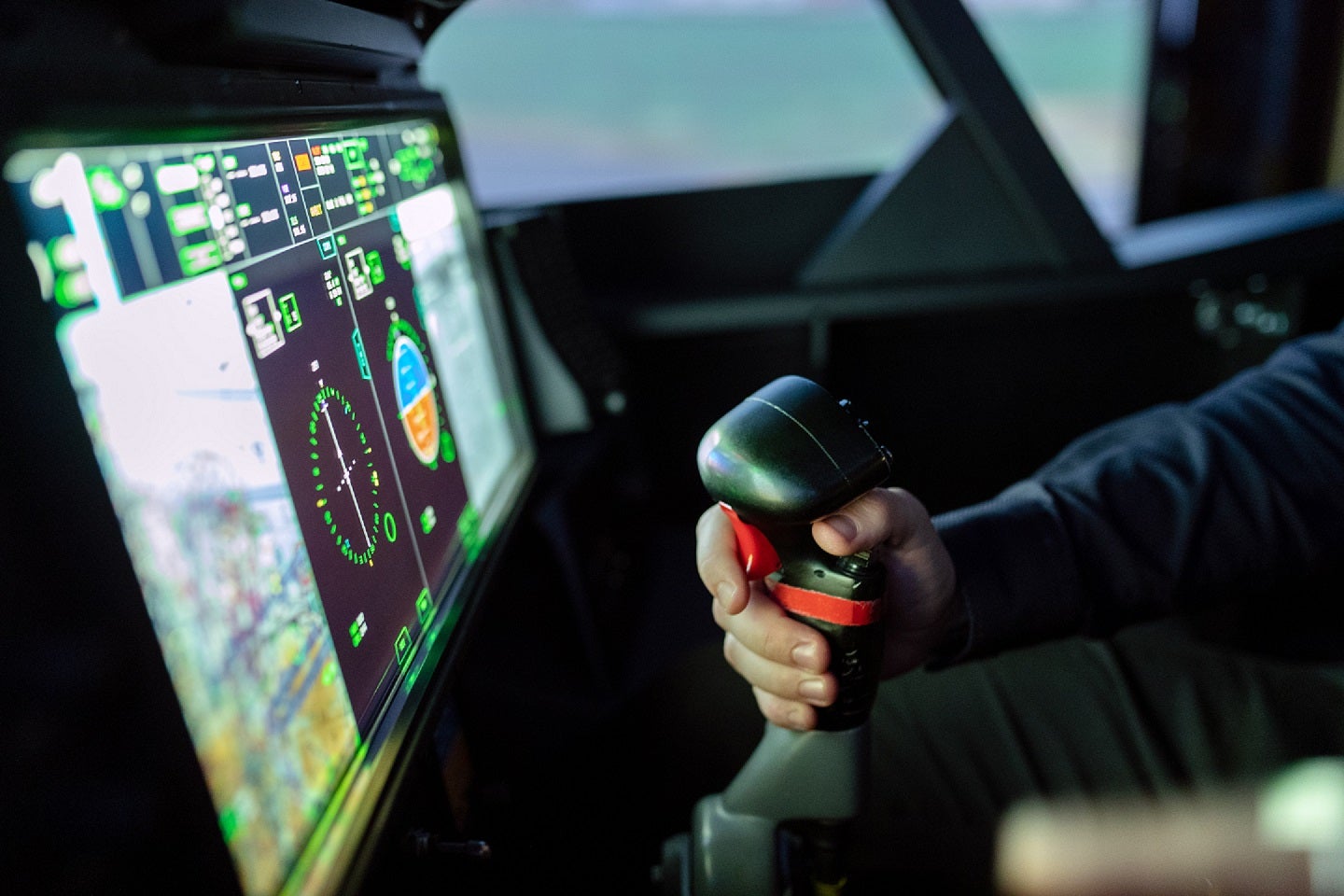
The UK Royal Air Force (RAF) Chief of Air Staff (CAS) Air Chief Marshal Mike Wigston defended the use of simulated environments for training purposes in a Defence Committee inquiry on 1 February, amid concerns that a simulated experience does not engender the pressures of an actual flight.
The discussion of simulated technology arose from the committee’s concern that the RAF’s Military Flying Training System (MFTS) is facing a major backlog. The recruitment of pilots far outpaces the resources and planes available for operational deployment. Simulated training compensates for this imbalance.
The CAS explained that the Covid-19 pandemic caused this backlog. This led to a delay in some recruitment courses in 2019/20 due to lockdown restrictions.
While we use simulation technology to fly an F-35 in the final stage of fast jet training, the CAS is considering expanding its usage. He emphasised the potential of future simulation technology. The CAS left open the possibility that it could totally replace the Hawk T2 training aircraft.
Wigston told the committee that “synthetics [may] reach such a level of development in the next ten years that we will be able to do that level of training in a synthetic environment”.
Steady growth for simulator market
The research and analytics firm GlobalData tells us that the global military simulator systems market is valued at $2.2bn in 2020 and will grow at a CAGR of 4.49% to reach $3.4bn by 2030. The CAS mentioned this was largely thanks to the developments in the gaming industry.
How well do you really know your competitors?
Access the most comprehensive Company Profiles on the market, powered by GlobalData. Save hours of research. Gain competitive edge.

Thank you!
Your download email will arrive shortly
Not ready to buy yet? Download a free sample
We are confident about the unique quality of our Company Profiles. However, we want you to make the most beneficial decision for your business, so we offer a free sample that you can download by submitting the below form
By GlobalDataAugmented reality (AR) is the most appealing form of simulation. Compared to other forms like virtual reality (VR) it is cheaper, has fewer limitations, causes less motion sickness, and it can be dual purpose – being used for both training and battlefield applications.
In its report on Augmented Reality in Defence, GlobalData states the use of AR will become inextricably linked with the defence sector.
In terms of end-users, the consumer AR segment accounted for 88% of total AR revenue in 2020. However, by 2030 the enterprise segment will be dominant, accounting for nearly two-thirds of total revenue. Militaries are responsible for a key segment of enterprise AR revenue as they seek out substantial contracts.
Militaries will adopt simulation technology like AR more and more, but what leads the CAS to believe this technology has the capability of totally replacing the real-life experience of flying a Hawk T2 or an F-35?
Wigston accepted that simulation training does not capture the “unique stresses” of flying in reality, but added that “modern technology in a simulator… is of better value in a simulated environment. You can put your aircraft in a position that you wouldn’t want to do in a live environment. You can give the student all sorts of stresses that you wouldn’t be able to replicate”.
While it seems this argument comes from trying to compensate for the RAF’s lack of planes, there is still certainly something to be said for the versatility and replicative powers that AR simulation can provide pilots.
There is no two-seat system of flying in which instructors can help a student fly a fast jet, “they’re on their own, but they get up to [a competent] standard in the simulator”, stated Wigston.







